Click on images to enlarge

infestation in bushland (Photo: Sheldon Navie)
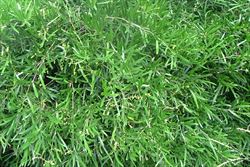
scrambling habit (Photo: Sheldon Navie)

climbing habit (Photo: Sheldon Navie)
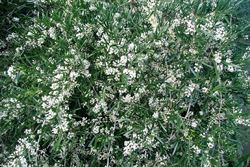
habit in flower (Photo: Sheldon Navie)
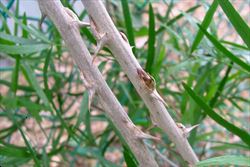
older woody stems with large thorns (Photo: Sheldon Navie)

close-up of smaller thorns on younger stems (Photo: Sheldon Navie)
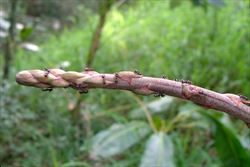
thick, whip-like, stem growing from underground tubers, which resembles the young edible stems of garden asparagus (Photo: Sheldon Navie)

close-up of leaves, with finely wavy margins, and flower buds (Photo: Sheldon Navie)
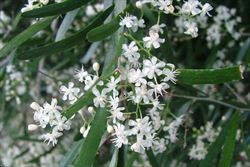
elongated flower clusters (Photo: Sheldon Navie)
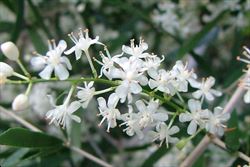
close-up of flowers (Photo: Sheldon Navie)
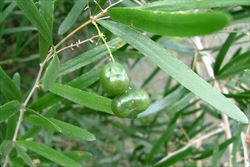
close-up of immature fruit (Photo: Sheldon Navie)

the sickle-shaped elongated 'leaves' (Photo: Sheldon Navie)
Scientific Name
Asparagus falcatus L.
Synonyms
Protasparagus falcatus (L.) Oberm.
Family
Asparagaceae (Queensland, New South Wales, the ACT and Western Australia)Liliaceae (Victoria, Tasmania, South Australia and the Northern Territory)
Common Names
asparagus fern, sickle thorn, sickle-leaved asparagus, sicklethorn, sickle-thorn asparagus
Origin
Native to eastern and southern Africa (i.e. Ethiopia, Somalia, Kenya, Tanzania, Uganda, Rwanda, Mozambique, South Africa and Swaziland), the Arabian Peninsula (i.e. Yemen) and Sri Lanka.
Naturalised Distribution
Locally naturalised in south-eastern Queensland.
Notes
Sicklethorn (Asparagus falcatus) is an emerging environmental weed in south-eastern Queensland. It is occasionally cultivated as a garden ornamental, and like other asparagus ferns (Asparagus spp.) it is spread into nearby bushland areas by birds and other animals that eat its fruit. This species prefers moist semi-shaded situations, and in recent years it has become more and more common in vegetation along waterways (i.e. in riparian areas) in and around Brisbane.

